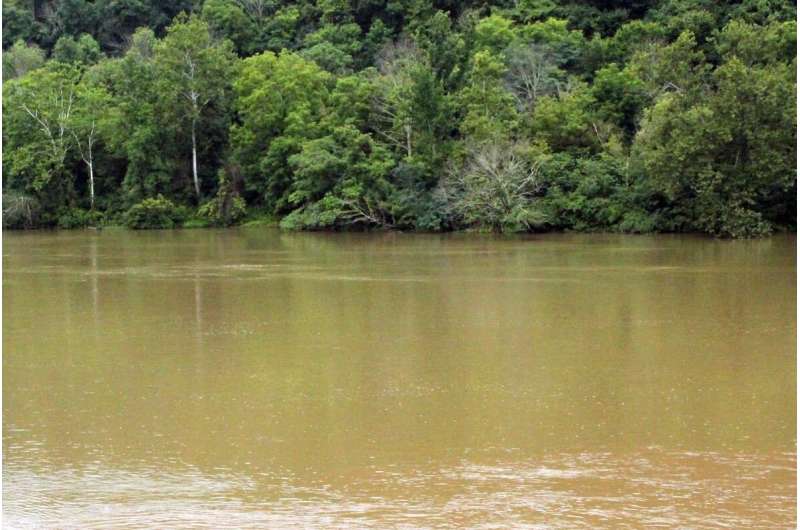Engineers have developed a model that can help predict levels of dissolved oxygen in any water body. Credit: Omar Abdul-Aziz
Plants and animals on land aren't the only organisms that need oxygen to survive. Underwater aquatic life also requires dissolved oxygen to live and prosper.
But factors such as pollution, water temperature and bacteria can deplete the amount of dissolved oxygen in an aquatic ecosystem, setting off a chain reaction that kills aquatic life and potentially spreads disease to humans.
In a U.S. National Science Foundation-supported study, West Virginia University engineer Omar Abdul-Aziz developed a simple, effective model that predicts dissolved oxygen in streams across the U.S. Atlantic Coast. Abdul-Aziz said the model can be applied to water bodies anywhere in the world.
"This research has provided a tool that can be used to identify regions with oxygen-deficient water resources, potentially enhancing their opportunities for improvement," said Bruce Hamilton, a program director in NSF's Directorate for Engineering.
Abdul-Aziz's research found that streams in the southern U.S.—in Florida and Georgia, for instance—have a higher metabolism, meaning that they contain less dissolved oxygen due to warmer temperatures and the high levels of nitrogen and phosphorus.
The findings are published in Science of the Total Environment.
"Water quality in rivers and streams has degraded throughout our nation and the world," Abdul-Aziz said. "If the water quality is not good, you'll end up with low oxygen. And just like we need oxygen in the air to breathe, aquatic life such as bugs, fish and flora need oxygen. If there's not enough oxygen, there can be major deaths and the decomposed matter can spread disease to humans."
A small amount of oxygen is dissolved in water, entering it from the atmosphere and groundwater discharge. Historically, making continuous measurements or predictions of dissolved oxygen has been challenging, given numerous streams and rivers and their diverse settings. For his study, Abdul-Aziz said that he established a novel concept that contains only two parameters.
"The more parameters, the more uncertain are the predictions," he said. "The important drivers are typically nutrients, temperature, atmospheric pressure, stream width and depth, pH and salinity. We brought these together in a simplified model to reduce uncertainty in the prediction, resulting in the output of dissolved oxygen."
Abdul-Aziz tested his model on streams across the U.S. Atlantic Coast, which revealed discrepancies between northern and southern regions. Poorer water quality was identified in southern streams. Abdul-Aziz pins this on warmer water temperatures, the presence of nutrients and narrower, shallower streams.
More information: Shakil Ahmed et al, Metabolic scaling of stream dissolved oxygen across the U.S. Atlantic Coast, Science of The Total Environment (2022). DOI: 10.1016/j.scitotenv.2022.153292
Journal information: Science of the Total Environment
Provided by National Science Foundation
























